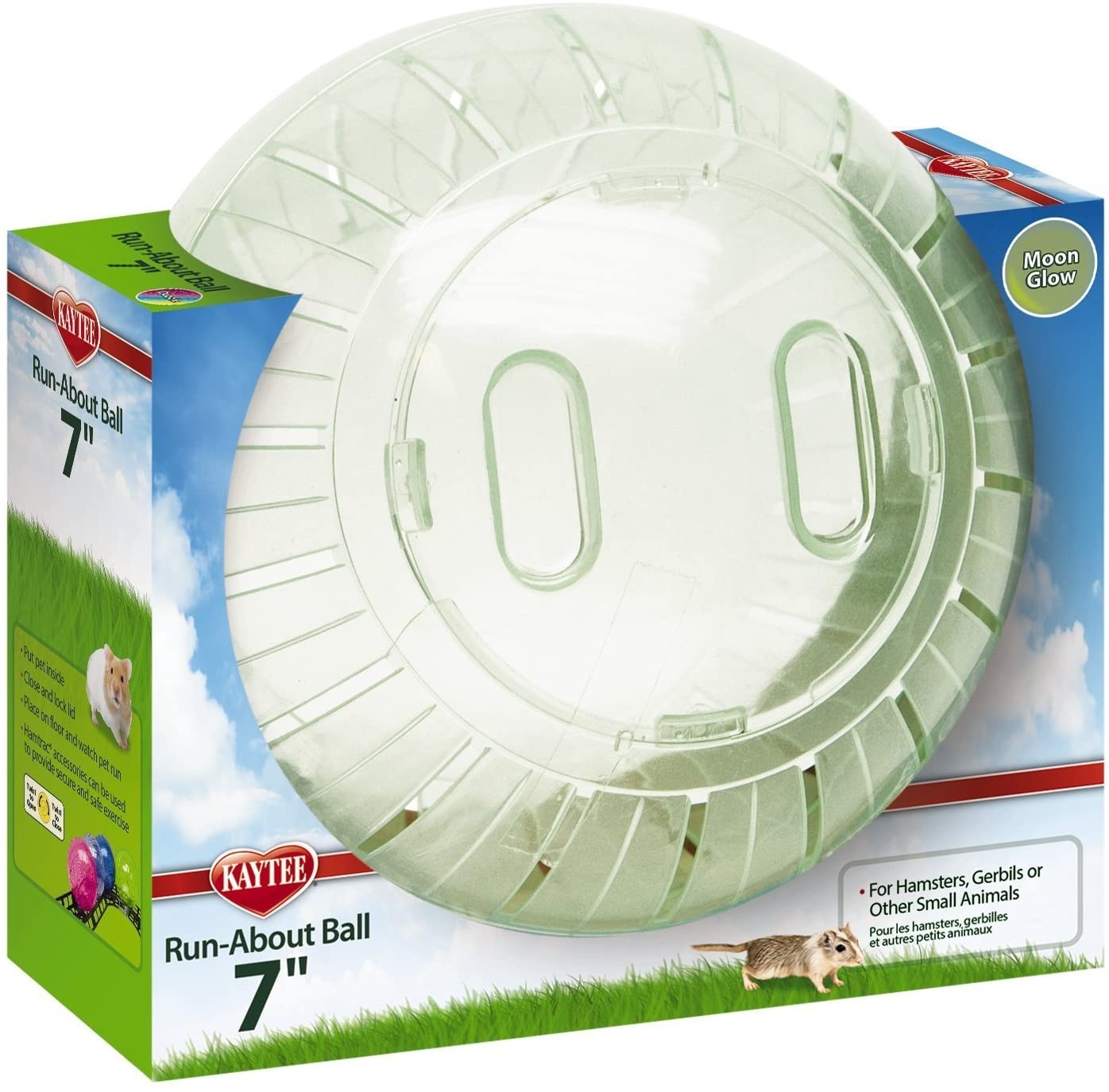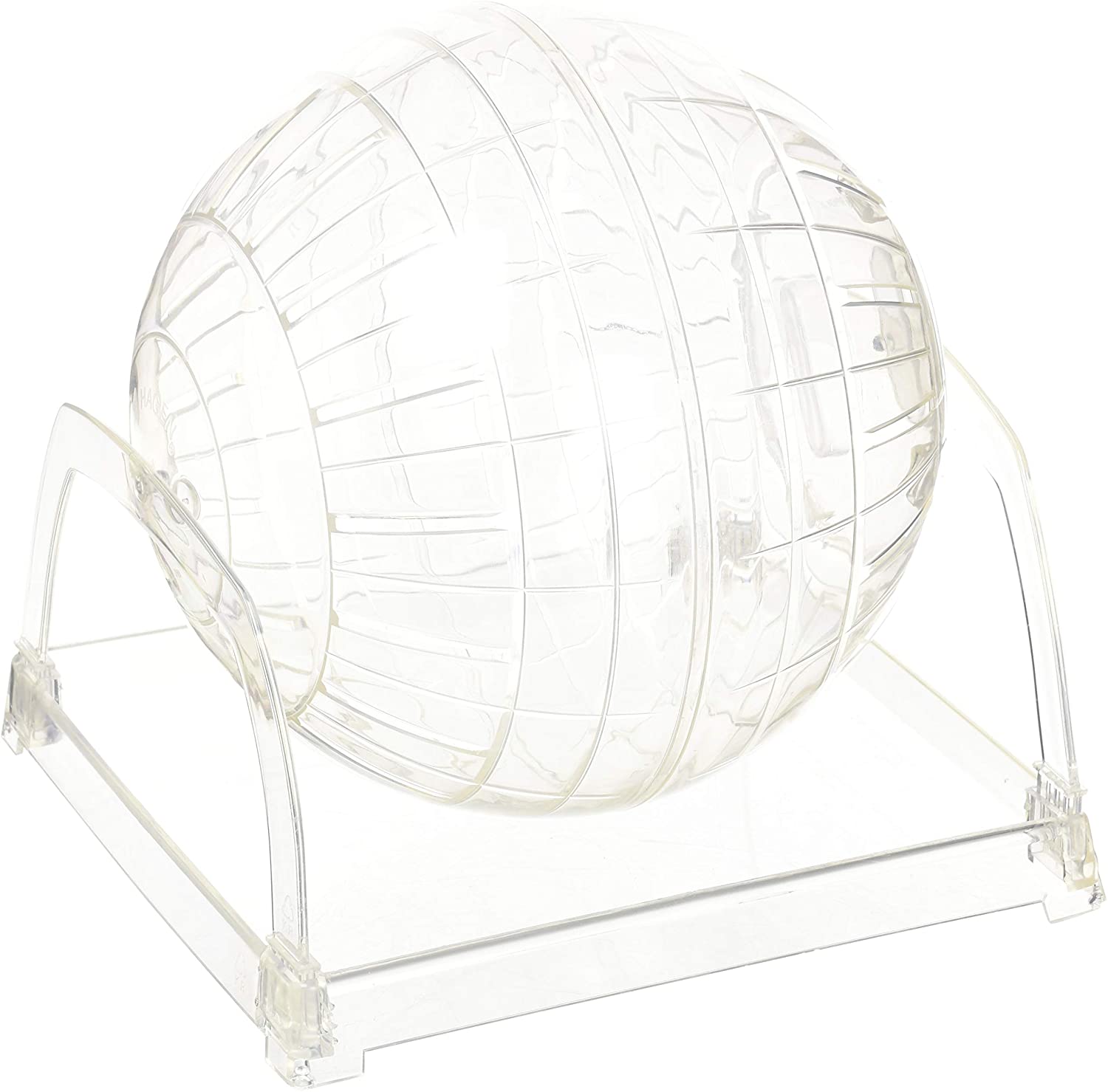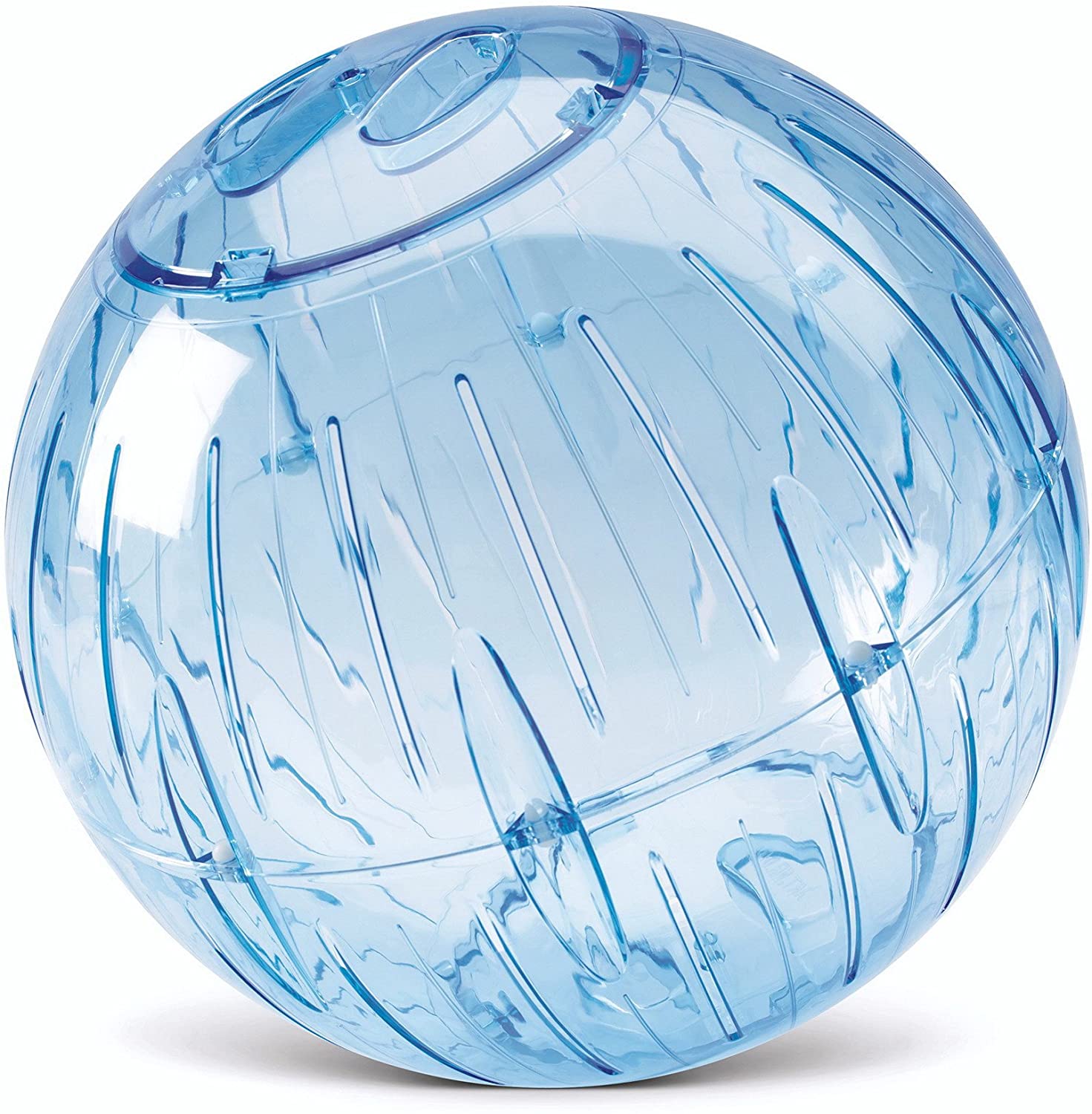Ever wondered, what is the best accessory for exercising your hamster? Have you come across the term hamster ball in pet stores or on the internet? A hamster ball, made of two separate see-through plastic-shells, is one of the most common accessories with which you can keep your little pet active and entertained.
Hamsters are nocturnal animals, which means they usually remain active during the evening. They enjoy spending time out of their hide-outs or cages and run around or play. To burn off their energy, you may invest in a hamster exercise ball that comes with a twist top, allowing you to place your pet inside securely. Though there is considerable controversy surrounding this device, your little friend can have a great time once it starts getting used to it, and feels safe running around with the ball.
Before buying a hamster ball for your pet, you should understand what it needs. Also, if you do not take the necessary precautions before placing your hamster into the ball for exercise, this apparently harmless toy might actually become dangerous for your furry friend.
Some owners do not recommend using hamster balls for stimulation because they consider it to be too stressful for their pet, often leading to exhaustion. If you still want to buy the ball for your hamster, you should stay informed about the possible risks:
As you see, once you are aware of these risks, you can find a way to overcome them, and use the hamster ball correctly to keep your pet safe inside it. If, however, it is used improperly, and without supervision, it will do more harm than good.
Hamster balls are a wonderful way by which you can keep your furry buddy active, thereby helping it to avoid common diseases like diabetes and obesity. Placing it inside the ball allows it to play around the house and prevents it from escaping, entering tiny holes. or getting lost under furniture. The hamster exercise ball is also an effective way to train and handle your pet, helping it to get accustomed to your touch and smell.
To reap these benefits, make sure that you opt for the right size so that your little pet has enough room inside the ball, which would allow it to run comfortably with its spine straight. Also, do not leave it inside for indefinite periods to make the experience more enjoyable.
Material: Most of the hamster balls available online or in the pet stores are made of plastic. Check the quality of the plastic used and its thickness to ensure that the item is durable. Also, hamsters have the tendency to chew on their exercise balls, so you need to be sure that the material is free from the harmful BPA.
Size: Hamsters come in different sizes, so a single size is not suitable for all the breeds. When buying, check the diameter of the ball, and get one that will allow enough room for your hamster to stand straight. Since these are way smaller than the recommended wheel sizes for hamsters, it is important that you go for large sizes. Otherwise, your hamster will have to keep its back arched while running, resulting in back pain, spine problems, and a general feeling of discomfort.
Adult Syrian hamsters would need an exercise ball that is 7-9 inches in diameter. Dwarf hamsters, on the other hand, would do well in a ball that measures 5-7 inches.
Proper Ventilation: The exercise ball should have an appropriate ventilation system, comprising slits that run through the entire surface of the toy. These slits should be big enough so that your pet inside the ball has plenty of air to breathe while running.
Color: The color of a hamster ball determines the level of visibility on both sides. If you choose a light translucent ball, you will clearly see your furry friend running inside while your pet sees out. Going for a light-colored ball also helps keep your hamster from overheating. It is because darker colors trap more heat as compared to the lighter ones.

This hamster ball, made of sturdy and durable plastic, is an effective exercise tool that allows your pet to be active and burn off its seemingly endless energy. It is available in different colors and designs, including a transparent one, which makes it easy for you to observe your hamster’s behavior inside the ball. Measuring 7 inches in diameter, the ball is large enough to accommodate your dwarf hamster, allowing it to stretch its paws comfortably. Some owners, however, complained that their hamsters were not interested and succeeded in escaping outside the ball.
Dimensions: 7.8 X 7 X 7.5 in
9.5/10

With this exercise ball from Living World, your little pet will have the fun of its life. Since the toy is made of strong, non-breakable and non-toxic plastic, your hamster will have a safe and mobile environment in which it can run and explore your house. Remarkably, the ball comes with sturdy stands that help in keeping it stable when your pet starts running without any restraint. The ventilation system is also top-notch and allows continuous air circulation. The lid, however, may become loose with frequent usage, and you need to secure it with a piece of tape to prevent your pet from falling out of the ball.
Dimensions: 7.79 X 7.79 X 7.29 in
9/10

Measuring 9.8 inches, this exercise ball from Savic is meant for the bigger breeds, such as the Syrian. Despite its large size, it is fairly light-weight, which means your hammy will not have a hard time running and rolling the ball forward. Your hamster will also have fewer complaints about the ribbed design, as it will help in getting a better grip while running. Some owners, however, had issues with its ventilation system and the little pegs that join the ball together.
Dimensions: 9.4 X 9.4 X 6.1 in
9/10

Because of its small size, it is suitable for the dwarf hamsters. But that does not mean you will get a ball made of cheap material. The plastic is so strong and durable that it does not shatter and can withstand shocks and impacts. It comes with a transparent design that offers clear visibility for your hammy, while its large slits ensure good ventilation. The ball also has ribs inside, which provides improved gripping power and lessens the chances of injuries.
Dimensions: 5 X 5 X 5 in
9/10

If you are on the lookout for a brightly colored, comfortable toy for your pet hamster, this 7-inch exercise ball from Kaytee Run will help create a fun and safe environment for your little fur buddy. Available in an array of colors, including blue, pink, yellow, and purple, this hamster ball is ideal for dwarf hamsters. Made of sturdy and non-toxic plastic, the toy has a transparent design that allows you to supervise the activity of your pet.
Dimensions: 7 X 7 X 7 in
9.5/10
1. Let your hamster get used to the ball: When you first bring home a hamster ball, you might be tempted to put your pet in it immediately and watch it run. However, things do not work out that easily. Since it is a new enclosed environment, your hamster would be cautious of the ball. Therefore, forcing it to enter the ball might prove to be stressful for your pet. To make it feel at ease, you may introduce your hammy to its exercise ball by placing the toy inside its cage so that it can sniff and explore this new object on its own.
2. Do not leave your hamster in the ball for too long: Leaving your hamster in the exercise ball for too long could be stressful for your pet. Initially, limit the roll time to 10-15 minutes. If it seems to have fun, you may gradually keep on adding a few minutes. If, however, it stops running for 1-2 minutes, it means that your pet does not want to run anymore, and it is time to take it out of the ball.
3. Keep the hamster under close observation: Make sure to twist the two halves tightly before letting the hamster ball roll so it does accidentally fall apart. Also monitor your hamster the whole time to make sure it remains active and alert inside the ball. Allow the hamster ball to roll only in confined areas that cannot be accessed by small children or other pets.
4. Do not let the hamster go out into the sun: Never allow your pet to roll in direct sunlight, as it would cause a hamster’s body to overheat or dehydrate. Your hamster will roll best on a carpeted surface indoors because the exercise ball will vibrate less than that on a hard floor.
5. Clean the ball before and after every use: The ball usually collects dust inside and is soiled with droppings or hamster food. Make sure to wipe the ball regularly and remove any material piled up to prevent the buildup of bacteria.
Although pocket pets such as mice, rats, hamsters, and gerbils may like running in a hamster ball, guinea pigs should never be put inside exercise balls. Since a guinea pig has a different body structure, putting it in an exercise ball will badly injure its back. Hamster balls can also be dangerous for hedgehogs, as being confined in an enclosed space may stress them out. Moreover, their nails can get caught in the ventilation slits and break off, causing severe injury.
Join our subscribers' list to get the latest news, and updates delivered directly in your inbox.